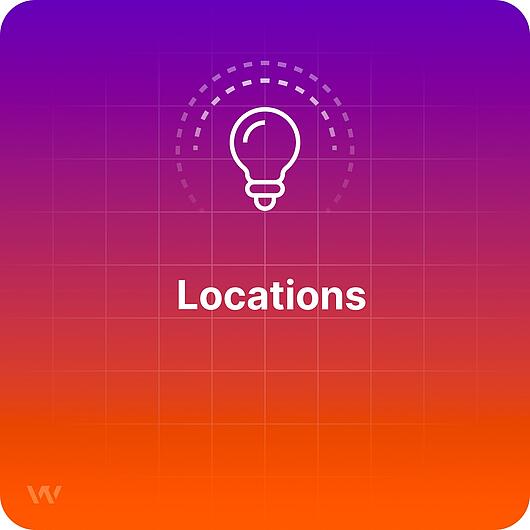- Why Us?
- Features
White Label
For SaaS Platforms & Agencies
Provide our complete analytics suite to your clients, directly within your own interface and with your/their own branding. Discover Analytics-as-a-Service and White Label Analytics. Great benefit, minimal effort.
- Pricing
- White Label
- Success Stories
- ResourcesGetting Started
Locations

TL;DR
Tracking the website Visitors' Location or approximate location can be useful for multiple reasons: you can run localized campaigns on your site, target specific cities and countries with your ads based on your data, display different content on some pages, or add multiple languages to your site.
What is Visitor Geolocation and how accurate is it?
Visitor Geolocation is quite self-explanatory, as it refers to the locations or approximate locations of your website visitors. There are a couple of ways to track this: either via an HTML5 feature using a geolocation API (Application Programme Interface) or via IP lookup.
The Geolocation API works like a pop-up, asking visitors if they agree to share their location, and if the answer is yes, then the site admin will receive the coordinates. If the answer is no, then no visitor location is provided.
IP lookup is the most common way to track visitor geolocation - most IPs are public, hence, there are lots of IP location providers on the web. By using a provider, you can easily see where the IP was last registered. The downside of this is that sometimes, the IP provider does not update the info, so, if an IP was newly assigned, there are is a high chance it will still have its old location.
For obvious security reasons, there are a lot of analytics tools that will not provide the exact location, though. Google is cross tracking data, so because they know what you Google, the videos you watch on YouTube, what is in your Gmail inbox and what ads you click, they do not provide the exact location within analytics tools. It would be too revealing, but the info can be used for targeting reasons within the ads service. Other tools add an algorithm to the received location in order to add a few km radius. So, you will not see the exact street and number of your visitors, but you will seebthe visitor a few km away from their location (usually, this means the same neighborhood). This is still a piece of very accurate information and more than enough to help you set up proper targeting in your ads or on your site.
How are Website Visitors by Country tracked?
When a person visits a website, their computer, smartphone or other type of device exchanges information with the website's server. Each web page is made up of multiple files, and the server transmits each one of these files to the user’s browser. From this type of data, traffic can be monitored on the website's homepage and all the other webpages, and also on segments of the site. This way, analytics tools determine exactly how many visitors each segment receives.
Why is Visitor Geolocation important?
There are multiple ways to use the number of visitors by geolocation. There are 3 types of metrics to look at:
- Visitors by country
Website visitors are important as, in most cases, they validate the success of a website. The more visitors a website has, the higher the brand awareness and the higher the chance of conversion. But knowing the target audience is one of the first steps towards a successful business. The location of visitors is crucial to providing relevant content and services.
You can also add multiple languages to your site, display different content based on the visitor country, run campaigns based on specific holidays or post new blog posts based on the visitors timezones!
- Visitors by city
Identifying your visitors' cities will help you better target your Social Media and Google Ads. You can use local events and happenings to hook your visitors fast and use the information to transform your visitors into customers faster if you have an office or shop as well in those cities. You can also identify ways to provide your service easier in cities where search volume is high, but where you are not active yet.
- All visitors map
You are able to check the Map of Visitors that will easily display the number of visitors, in a given time range, all around the globe. So, you can have a quick overview of how the website is performing across countries, without going through charts and tables.

